Q&A with Ahndraya Parlato, Hyeres 2009
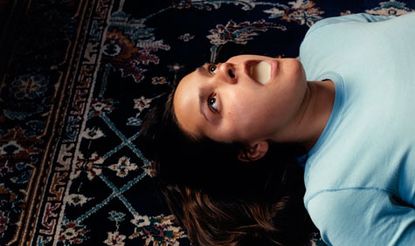
Whereabouts in the world are you based?
Ithaca, New York
Your photographs seem intensely ‘real’, but they are spiked with some rather surreal moments, is this dichotomy important to you?
Yes. One of the ways I think of my work is as an expansion of reality, or what we accept as reality, often highlighting the uncanniness or magic of everyday life. It is important to me that my images exist in the ‘real’ world, rather than, say, create their own fantastical world.
Who models for your photographs?
Because there is so often an element of duration or discomfort during the shoots, I often ask close friends to model for me because I’m more comfortable bossing them around!
You seem fascinated by the idea of the human trace, are your photographs your way of leaving a legacy?
Wallpaper* Newsletter
Receive our daily digest of inspiration, escapism and design stories from around the world direct to your inbox
I feel like these are two different ideas. I am intrigued by the idea of trace or residue. As for a legacy, I don’t think I have ever consciously thought of my work in that way, though I suppose, if we’re defining legacy as something that will continue to exist after we cease to, then you could apply that to any artist in any medium.
Although predominantly staged, to what extent does spontaneity play a role in your work?
Well, spontaneity perhaps plays a larger role in the conception of the idea, rather than the execution. I may see something in the world that makes an impression for an image I want to make, or somehow crystallizes an idea I’ve been sitting on, but by the time I make it, it’s fairly planned out.
Where do you find inspiration?
The landscape of upstate New York never ceases to inspire me - a great balance of being simultaneously bleak, but also hopeful. I’m inspired by a lot of people including the filmmakers - Ingmar Bergman and Krzysztof Kieslowski; the writers Michael Ondaajte, Marguerite Duras and Don Delilo; and the artists David Shrigley, Sophie Calle and Gabriele Orozco.
Which person has most influenced you career thus far?
Probably my mum. I was an only child, and she was a single mum, so we had a pretty intense relationship. She was mentally ill, and at her best, was always finding humour and magic in everyday life, which are elements I definitely think about in my art-making.
The people in your photographs always seem on the brink of unravelling, is this intentional?
I do often think about how people navigate the world by constructing ideals, ideals of progress, perfection, and wholeness, which can mark our path through life - we construct ideals to feel safe and secure, but really, at any time, outside forces can completely unravel our world. I think my subjects are aware of the futility of attempting to control what cannot be controlled.
To what extent does narrative play a role in your photographs?
Well, narrative plays a large part in each individual image, but not in the sense that there’s one story or idea that the viewer should come away with. Overall, I don’t think of them as constructing a linear narrative - more like a poem than a prose piece.
Click here to see more from Hyeres 2009
-
 LEVC’s L380 is a truly magnificent minivan
LEVC’s L380 is a truly magnificent minivanThe London Electric Vehicle Company’s L380, is a magnificent minivan designed for upscale long-distance travel, as the maker of the London Taxi branches out into all-purpose EVs
By Jonathan Bell Published
-
 Enjoy ocean and jungle bliss at Bespoke Tulum’s residences in Mexico
Enjoy ocean and jungle bliss at Bespoke Tulum’s residences in MexicoBespoke Tulum is an exclusive hospitality complex designed by Muro Rojo Arquitectura on Mexico’s Caribbean coastline
By Sofia de la Cruz Published
-
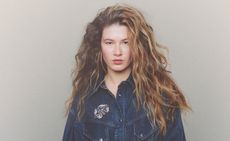 In Van Cleef & Arpels’ high jewellery, the archival meets the au courant
In Van Cleef & Arpels’ high jewellery, the archival meets the au courantVan Cleef & Arpels pays tribute to its rich heritage with a captivating high jewellery collection
By Hannah Silver Published
-
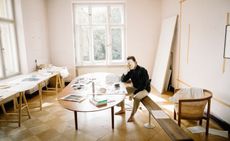 Cyprien Gaillard on chaos, reorder and excavating a Paris in flux
Cyprien Gaillard on chaos, reorder and excavating a Paris in fluxWe interviewed French artist Cyprien Gaillard ahead of his major two-part show, ‘Humpty \ Dumpty’ at Palais de Tokyo and Lafayette Anticipations (until 8 January 2023). Through abandoned clocks, love locks and asbestos, he dissects the human obsession with structural restoration
By Harriet Lloyd-Smith Published
-
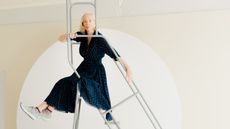 Year in review: top 10 art interviews of 2022, chosen by Wallpaper* arts editor Harriet Lloyd-Smith
Year in review: top 10 art interviews of 2022, chosen by Wallpaper* arts editor Harriet Lloyd-SmithTop 10 art interviews of 2022, as selected by Wallpaper* arts editor Harriet Lloyd-Smith, summing up another dramatic year in the art world
By Harriet Lloyd-Smith Published
-
 Yayoi Kusama on love, hope and the power of art
Yayoi Kusama on love, hope and the power of artThere’s still time to see Yayoi Kusama’s major retrospective at M+, Hong Kong (until 14 May). In our interview, the legendary Japanese artist vows to continue to ‘create art to leave the message of “love forever”’
By Megan C Hills Last updated
-
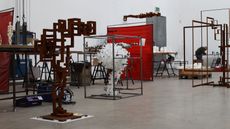 Antony Gormley interview: ‘We’re at more than a tipping point. We’re in a moment of utter crisis’
Antony Gormley interview: ‘We’re at more than a tipping point. We’re in a moment of utter crisis’We visit the London studio of British sculptor Antony Gormley ahead of his major new show ‘Body Field’ at Xavier Hufkens Brussels
By Harriet Lloyd-Smith Last updated
-
 Photographer Maisie Cousins on nostalgia, impulsive making and ‘collecting useless things’
Photographer Maisie Cousins on nostalgia, impulsive making and ‘collecting useless things’Explore the vision of British artist Maisie Cousins in ‘Through the lens’, our monthly series spotlighting photographers who are Wallpaper* contributors
By Sophie Gladstone Last updated
-
 Rashid Johnson in Menorca: a journey through migration, longing and togetherness
Rashid Johnson in Menorca: a journey through migration, longing and togethernessWe visited Rashid Johnson’s Brooklyn studio ahead of the artist’s show at Hauser & Wirth Menorca, which contemplates drift – physical and emotional
By Osman Can Yerebakan Published
-
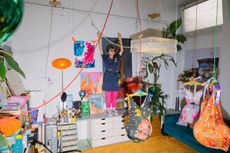 Step inside the kaleidoscopic universe of Pipilotti Rist
Step inside the kaleidoscopic universe of Pipilotti RistSwiss artist Pipilotti Rist, who headlines Wallpaper’s November 2022 issue, has transformed the way we see, with a poetic yet playful practice spanning three decades. Here, and in a special portfolio, she reveals how she has liberated video art from its conventions, imbued the digital realm with emotion, animated public spaces, and harnessed the healing powers of colour
By Jessica Klingelfuss Last updated
-
 Gathering: the new Soho gallery blending art and social activism
Gathering: the new Soho gallery blending art and social activismGathering, the newest gallery resident in London’s Soho, will focus on contemporary art exploring systemic social issues. Ahead of Tai Shani’s inaugural show, we speak to founders Alex Flick and Trinidad Fombella about their vision for the gallery
By Harriet Lloyd-Smith Last updated